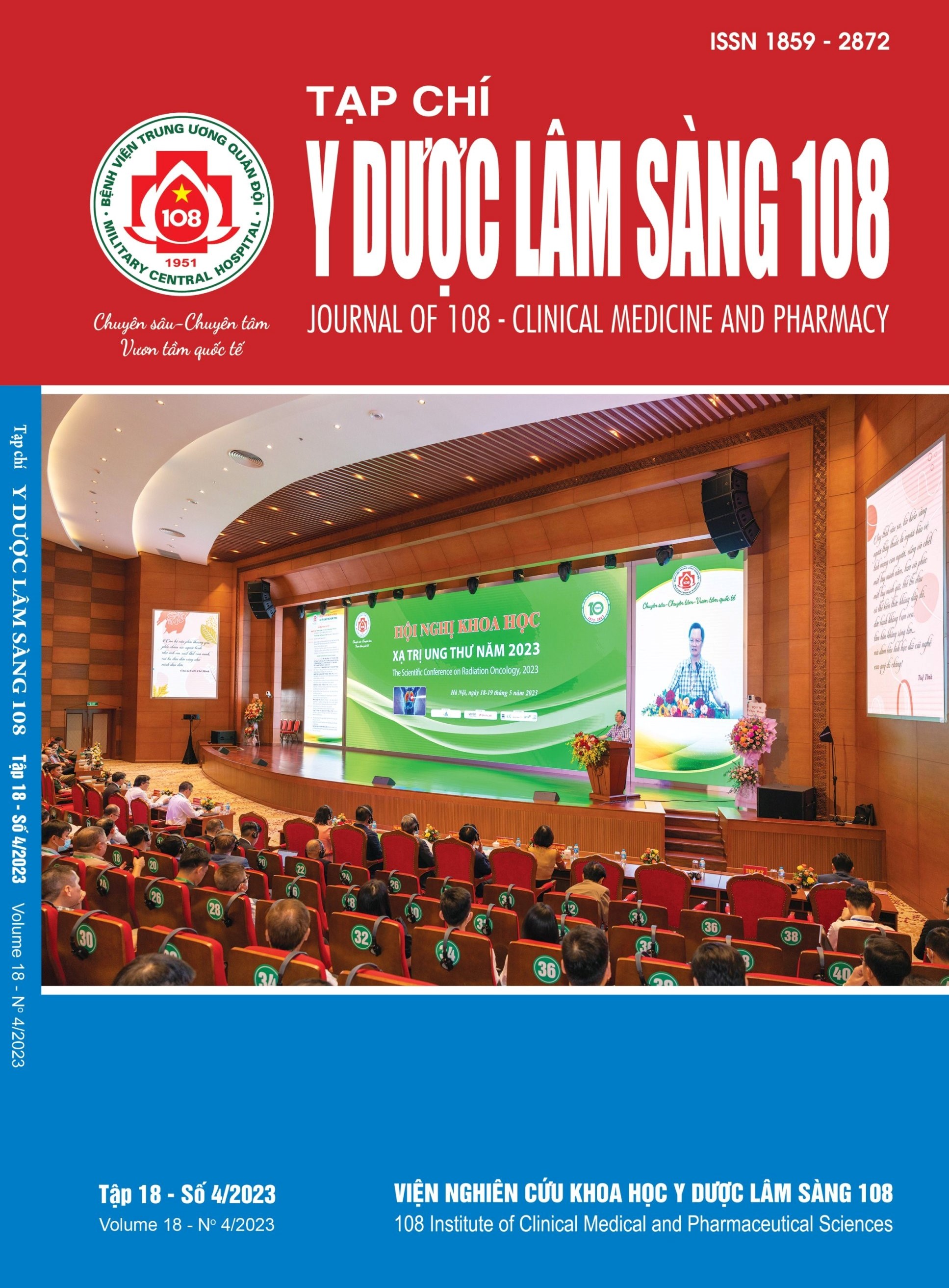Tỷ lệ và các yếu tố nguy cơ nhiễm cytomegalovirus trên bệnh nhân sau ghép gan từ người hiến sống
Main Article Content
Keywords
Tóm tắt
Mục tiêu: Khảo sát tỷ lệ và các yếu tố nguy cơ nhiễm cytomegalovirus (CMV) sau ghép gan từ người hiến sống. Đối tượng và phương pháp: Nghiên cứu hồi cứu 151 trường hợp được ghép gan từ người hiến sống, từ tháng 10 năm 2017 đến tháng 01 năm 2023, tại Bệnh viện Trung ương Quân đội 108. Kết quả: Trung vị tuổi: 55 (19-75), 85,4% là nam giới, trung vị BMI: 23,12 (16,38-40,3), trung vị điểm MELD: 21 (6-44); CMV IgG dương tính ở 100% người nhận gan và 98% người hiến gan. 8 trong số 151 trường hợp bị nhiễm CMV sau ghép gan (5,29%), phân tích hồi quy đơn biến theo mô hình Cox cho kết quả thời gian nằm ICU sau ghép gan kéo dài làm tăng nguy cơ nhiễm CMV sau ghép. Kết luận: Nhiễm CMV là nhiễm khuẩn cơ hội phổ biến nhất ở bệnh nhân ghép gan. Vì vậy, cần chẩn đoán sớm và điều trị tích cực, đúng phác đồ để làm giảm tỷ lệ biến chứng và tử vong sau ghép gan.
Article Details
Các tài liệu tham khảo
2. Lizaola-Mayo BC, Rodriguez EA (2020) Cytomegalovirus infection after liver transplantation. World J Transplant 10(7): 183-190.
3. Ljungman P, Boeckh M, Hirsch HH, Josephson F, Lundgren J, Nichols G et al (2017) Definitions of cytomegalovirus infection and disease in transplant patients for use in clinical trials: Table 1. Snydman DR, editor. Clin Infect Dis 64(1): 87-91.
4. Paya CV, Marin E, Keating M, Dickson R, Porayko M, Wiesner R (1993) Solid organ transplantation: results and implications of acyclovir use in liver transplants. J Med Virol 1: 123-127.
5. Zuhair M, Smit GSA, Wallis G, Jabbar F, Smith C, Devleesschauwer B et al (2019) Estimation of the worldwide seroprevalence of cytomegalovirus: A systematic review and meta-analysis. Rev Med Virol 29(3): 2034.
6. Yadav SK, Saigal S, Choudhary NS, Saha S, Kumar N, Soin AS (2017) Cytomegalovirus infection in liver transplant Recipients: Current approach to diagnosis and management. J Clin Exp Hepatol 7(2): 144-151.
7. Bruminhent J, Thongprayoon C, Dierkhising RA, Kremers WK, Theel ES, Razonable RR (2015) Risk factors for cytomegalovirus reactivation after liver transplantation: Can pre-transplant cytomegalovirus antibody titers predict outcome? Liver Transpl 21(4): 539-546.
8. Singh N, Wannstedt C, Keyes L, Wagener MM, Cacciarelli TV (2005) Who among cytomegalovirus-seropositive liver transplant recipients is at risk for cytomegalovirus infection? Liver Transplant Off Publ Am Assoc Study Liver Dis Int Liver Transplant Soc 11(6):700-704.
9. Dahiya D, Lee CF, Chan KM, Wu TJ, Chou HS, Cheng SS et al (2011) A short-term preemptive treatment for cytomegalovirus infection in seropositive patients after liver transplantation. J Hepato-Biliary-Pancreat Sci 18(1): 32-38.
10. Yim SH, Choi MC, Kim DG, Min EK, Lee JG, Joo DJ, et al (2023) Pathogens. 12(4): 521.
11. Busch CJ, Siegler BH, Werle H, Lichtenstern C, Bruckner T, Heininger A et al (2018) Risk factors for early viral infections after liver transplantation. Langenbecks Arch Surg 403(4): 509-519.
 ISSN: 1859 - 2872
ISSN: 1859 - 2872
